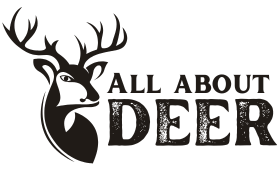Enter the world of the Dicrocerus elegans, a truly captivating deer species that might not be as famous as its counterparts but possesses a unique charm. These graceful creatures have long roamed the woodlands, and their existence is a testament to the diversity of the deer family.
Table of Contents
Species Data
- Class: Mammalia
- Order: Artiodactyla
- Family: Cervidae
- Scientific Name: Dicrocerus elegans
- Life Span: Typically 8-12 years
- Height: Approximately 60-75 cm (24-30 inches)
- Weight: Around 35-45 kg (77-99 pounds)
Description
Dicrocerus elegans, also known as the “elegant deer,” is a petite and charming member of the deer family. With a graceful build and slender legs, they exude an air of elegance. Their modest size and striking appearance set them apart from larger deer species.
Appearance
These deer are known for their distinctive reddish-brown fur, adorned with white spots that add to their elegance. The males, or bucks, typically sport small, straight antlers. Their dainty appearance makes them a delightful sight for wildlife enthusiasts.
Behavior
Dicrocerus elegans are known for their timid and gentle demeanor. They prefer to graze in the tranquil woodlands, often seen feeding on various vegetation. Their shy disposition makes them cautious around potential threats, allowing them to thrive in their natural habitat.
Habitat
These elegant deer are commonly found in lush, temperate forests, where they can seek shelter and find an abundant supply of food. They are well-adapted to forested environments and are often spotted near clearings and streams.
Diet and Nutrition
Dicrocerus elegans are herbivores with a diet primarily consisting of leaves, grasses, and tender shoots. Their selective feeding habits help maintain the balance of plant life in their habitats.
Mating Habits
During the breeding season, which varies by location and climate, males engage in courtship displays to attract females.
Mating Behavior
- Reproduction Season: Typically occurs in late spring to early summer
- Pregnancy Duration: Approximately 6-7 months
- Baby Carrying: Does care for and protect their fawns
- Independent Age: Fawns become more independent at around 6-8 months
- Female Name: Doe
- Male Name: Buck
- Baby Name: Fawn
5 Fun Facts for Kids
- Dicrocerus elegans are often called “elegant deer” due to their graceful appearance.
- Their striking white spots make them resemble living constellations in the forest.
- Despite their timid nature, they are agile runners when faced with danger.
- Elegant deer play a vital role in their ecosystem by helping disperse seeds through their droppings.
- These charming creatures are symbols of the beauty and serenity of the forest.

